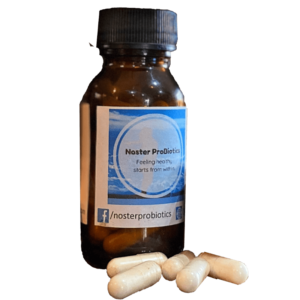Introduction
Have you ever wondered what makes live probiotics unique? Whether you’ve heard the term in passing, seen it plastered on yoghurt labels, or have a jar of probiotic supplements sitting on your kitchen counter, there’s more to these microscopic wonders than meets the eye. With all the buzz around gut health these days, it’s high time we delve into the world of live probiotics. In this comprehensive guide, we’ll unpack what they are, why they matter, and how you can benefit from integrating them into your daily regimen.
What Are Probiotics?
Before we dive into the ‘live’ part, let’s start with the basics: What are probiotics? In scientific terms, they’re microorganisms that provide health benefits when consumed in adequate amounts. But let’s break that down in simpler terms.
Your Gut, A Bustling Metropolis
Think of your gut as a bustling metropolis, teeming with different species of bacteria, fungi, and other microorganisms. Like any city, your gut requires good governance, waste management, and security forces to function efficiently. That’s where probiotics come in. They are akin to the friendly neighbourhood volunteers who keep things running smoothly.
Probiotics as Gardeners
If cities aren’t your thing, imagine your gut as a lush garden. Probiotics are the master gardeners diligently taking care of the plants and keeping the pests at bay. They enrich the soil (your gut lining), promote the growth of beneficial flora, and make sure harmful bugs don’t take over. This helps your garden (your gut) thrive, affecting everything from your digestion to your mental well-being.
What Makes Them ‘Live’?
The term ‘live’ is not just some marketing gimmick; it signifies something important. You might wonder, what’s the difference between live and non-live probiotics? Is it just another way to up-sell you a pricier bottle? The answer is a resounding no.
Alive and Kicking
When we talk about live probiotics, we’re referring to metabolically active strains. That means they’re not just surviving; they’re thriving and ready to work as soon as they hit the ecosystem of your gut. They navigate through the harsh acidic environment of your stomach, resisting bile and digestive enzymes, all to reach their destination—your intestines.
The Importance of Viability
Viability is a critical factor when it comes to probiotics. In essence, the more of them that reach your gut alive, the more effective they will be. Many factors can affect the viability of probiotics—temperature, moisture, and even the food you take them with. But live probiotics are often encapsulated in a way that increases their survival rate, making them more likely to reach your gut intact.
Why Should You Care?
Okay, so we’ve waded through a fair bit of scientific jargon and buzzwords, but why does any of this matter to you, the everyday person just trying to live a little healthier? Here’s why you should sit up and pay attention:
1. A Healthier, Happier You
At the core of it all is your well-being. Probiotics, especially live ones, have the power to fundamentally change your health for the better. It’s not just about aiding digestion or boosting immunity—though those are fantastic perks. It goes beyond that. For instance, did you know that your gut is often referred to as the “second brain?” Numerous scientific studies have demonstrated the deep connection between gut health and mental well-being. Conditions like depression, anxiety, and even mood swings are often linked to an imbalance in gut flora. Imagine a life where your mood is uplifted, your tummy is happy, and you’re less susceptible to the latest bug making its rounds. That’s the power of live probiotics.
2. Quality Over Quantity: Make Smarter Choices
Ever walked into a health store and felt utterly overwhelmed by the myriad of probiotic options? You’re not alone. However, knowing the significance of live culture probiotics offers you a compass in this confusing landscape. When you understand that live cultures are more effective, you can cut through the noise and hone in on products that are genuinely beneficial, not just well-marketed. It’s like having a secret weapon in your quest for better health.
By considering these factors, you’re not just mindlessly jumping on the probiotic bandwagon. You’re making an educated, conscientious decision that could significantly impact your health in the long run. And that, dear reader, is why you should care.
Common Sources of Live Probiotics
So where can you find these little miracle workers? While the first things that may come to mind are yoghurt and kefir, the world of live probiotics is much more diverse. Let’s explore some popular options.
Dairy and Non-Dairy Yogurts
Both dairy and plant-based yoghurts are excellent sources of live probiotics. The key is to look for the term ‘live cultures’ on the label. Fun fact: Did you know some dairy-free yoghurts use coconut milk or almond milk as a base?
Fermented Foods
Sauerkraut, kimchi, and pickles are not just tasty; they’re teeming with live probiotics. Just make sure you opt for the versions stored in the refrigerated section, as those tend to contain more live cultures.
Probiotic Supplements
For those who are lactose intolerant or prefer to skip fermented foods, probiotic supplements are a convenient option. They come in various forms, from capsules to powders and even chewables for children. Noster ProBiotics are an example of a live probiotic and have to be stored in the fridge.
How to Choose the Right Probiotic
Navigating the wide range of probiotics available can feel like walking through a maze. Here’s how to make a more informed choice:
1. Understand the Strains
Think of strains as the ‘species’ of bacteria in your probiotic. Different strains offer different benefits, and the key is to match the strain to your specific health needs. For instance, if you’re looking to enhance your gut health, Lactobacillus acidophilus might be your go-to. If you’re more concerned about immunity, consider a probiotic featuring Bifidobacterium bifidum. Always do your research or consult a healthcare provider to get the scoop on which strains will work best for you.
2. Check the CFU Count
CFU, or Colony Forming Units, gives you an idea of the number of live organisms you can expect in each dose. Don’t be swayed by sky-high CFU counts alone. More isn’t always better; sometimes it’s just more. Typically, a higher CFU count is better for restoring gut balance, but there can be instances where a lower count is appropriate. Always consult your healthcare provider for personalized recommendations.
3. Expiration and Storage: Handle with Care
Probiotics are live cultures, making them somewhat delicate. Always check the expiration date when making your purchase. A probiotic past its expiration date may offer reduced efficacy or none at all. Likewise, take note of any storage requirements. Some probiotics need to be refrigerated, while others are okay at room temperature. Mishandling can compromise their effectiveness, so be sure you know how to properly store your choice.
Armed with these pointers, you’re now better equipped to make a savvy probiotic selection that aligns with your health goals.
We of course recommend our brand Noster Probiotics
Conclusion
So there you have it—a complete guide to understanding live probiotics, from what they are and why they matter to where to find them and how to choose the right one for you. It’s a lot to digest (pun intended), but we hope this comprehensive exploration has equipped you with the knowledge to make an informed decision. Isn’t it time you welcomed these diligent little workers into your life?
FAQs
Q1: How often should I consume probiotics?
A: The ideal frequency for consuming probiotics varies depending on your health needs and the source of the probiotics. Daily consumption is generally safe and beneficial if you’re getting them from foods like yoghurt or kimchi. For supplements, it’s best to follow the guidelines on the package or consult a healthcare provider.
Q2: Can kids have live probiotics?
A: Yes, children can benefit from live probiotics, especially for digestive health and immunity. However, it’s essential to consult with a paediatrician for the appropriate strains and dosages. Also, be cautious if your child has a compromised immune system or other serious health conditions.
Q3: Do probiotics help with weight loss?
A: While probiotics are not a magic bullet for weight loss, some research suggests that they can support a healthy gut, which in turn may assist in weight management. Always remember, a balanced diet and regular exercise are the cornerstone of effective weight loss.
Q4: Can I have live probiotics on an empty stomach?
A: Taking live probiotics on an empty stomach may allow them to pass more quickly through the stomach, increasing the likelihood that they’ll survive and reach your intestines. However, this can vary depending on the specific product, so it’s wise to read instructions or consult a healthcare provider.
Q5: How long before I see benefits?
A: The time frame for experiencing benefits from probiotics varies from person to person. Some people report feeling better in as little as a few days, while for others, it may take weeks. Consistency is key, and you should give it at least a month for more noticeable results.
Additional Resources
For more depth, consider diving into our extensive collection of articles and products:


